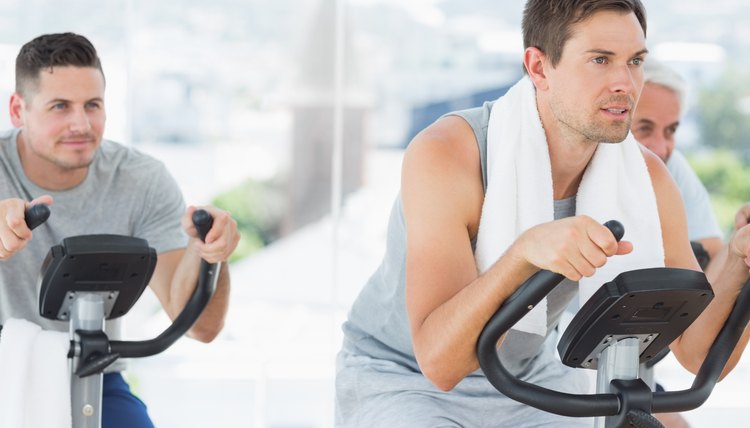What does fact checked mean?
At SportsRec, we strive to deliver objective content that is accurate and up-to-date. Our team periodically reviews articles in order to ensure content quality. The sources cited below consist of evidence from peer-reviewed journals, prominent medical organizations, academic associations, and government data.
- ACE Fit: Cross-Training for Fun and Fitness
- American College of Sports Medicine: ACSM Issues New Recommendations on Quantity and Quality of Exercise
- American College of Sports Medicine: ACSM Issues New Recommendations on Quantity and Quality of Exercise
The information contained on this site is for informational purposes only, and should not be used as a substitute for the advice of a professional health care provider. Please check with the appropriate physician regarding health questions and concerns. Although we strive to deliver accurate and up-to-date information, no guarantee to that effect is made.
How to Mix Treadmill & Exercise Bike Workouts

Mixing your treadmill and exercise bike workouts is like combining chocolate and peanut butter: a good idea. Alternating your cardiovascular workouts between two different exercises reduces risk of an overuse injury, increases motivation and endurance, and may even eliminate boredom. Walking and running on a treadmill are impact exercises while cycling is a non-impact workout. The combination of both during one session provides a more comprehensive workout.
Warm up for five to 10 minutes on either the treadmill or the stationary bike at a slow to moderate pace.
Complete your workout in a circuit-training style by alternating time spent on each exercise. For example, cycle for five minutes and then walk or jog on the treadmill for five minutes. Repeat the pattern for a total of 30 to 40 minutes. Exercise at a moderate intensity to elevate your heart rate.
Split your workout into two steady-state sessions. Perform five to 10 minutes on either the treadmill or the bicycle -- whichever is the most challenging for you -- at a pace that is moderately challenging, but one at which you are able to maintain a conversation. Complete 20 to 30 minutes on the easier exercise at a moderate to high intensity but at a level at which you are still able to talk.
Gradually increase the amount of time you spend on each exercise as your fitness level improves. For example, if you began with a 10-minute walk and a 20-minute cycle, walk for 12 minutes and then cycle for 23 minutes. The American College of Sports Medicine recommends 150 minutes of moderate-intensity exercise each week with each session lasting for a minimum of 20 minutes and a maximum of 60 minutes.
Vary the intensity of each exercise by increasing the speed and elevation.
Perform a five-minute cool-down on the equipment you use last. Gradually slow your pace and finish with a very slow walk or pedal.
Stretch your legs and other major muscle groups for 15 to 30 seconds each.
Tips
Minimize your transition time between equipment to keep your heart rate elevated.
Warnings
Speak with your doctor before you begin any workout program if you have a medical condition or have been inactive.
Explore In Depth
References
Writer Bio
A mother of two and passionate fitness presenter, Lisa M. Wolfe had her first fitness article published in 2001. She is the author of six fitness books and holds an Associate of Arts in exercise science from Oakland Community College. When not writing, Wolfe is hula-hooping, kayaking, walking or cycling.
